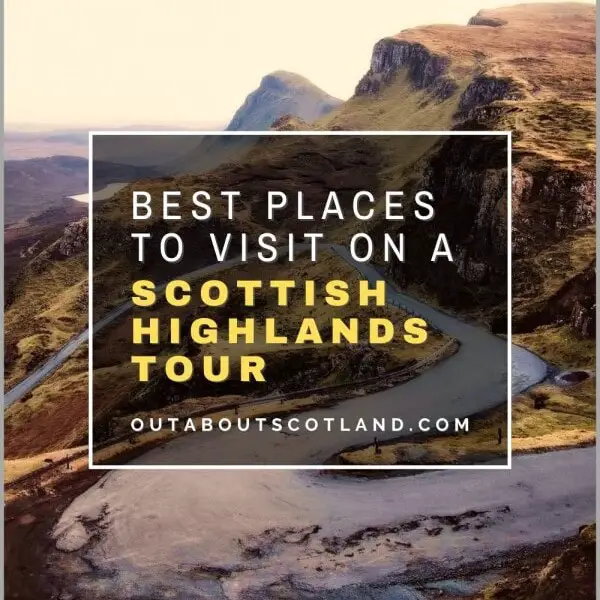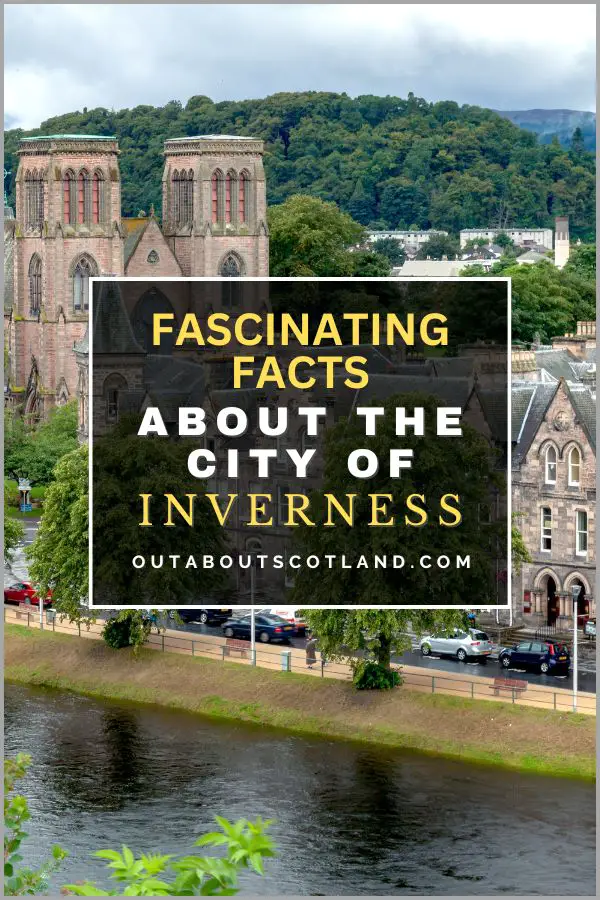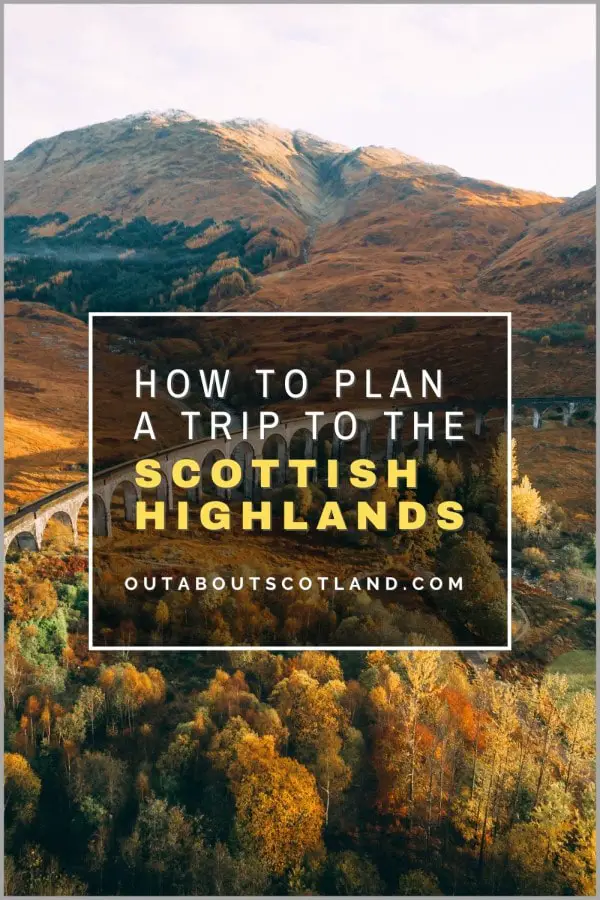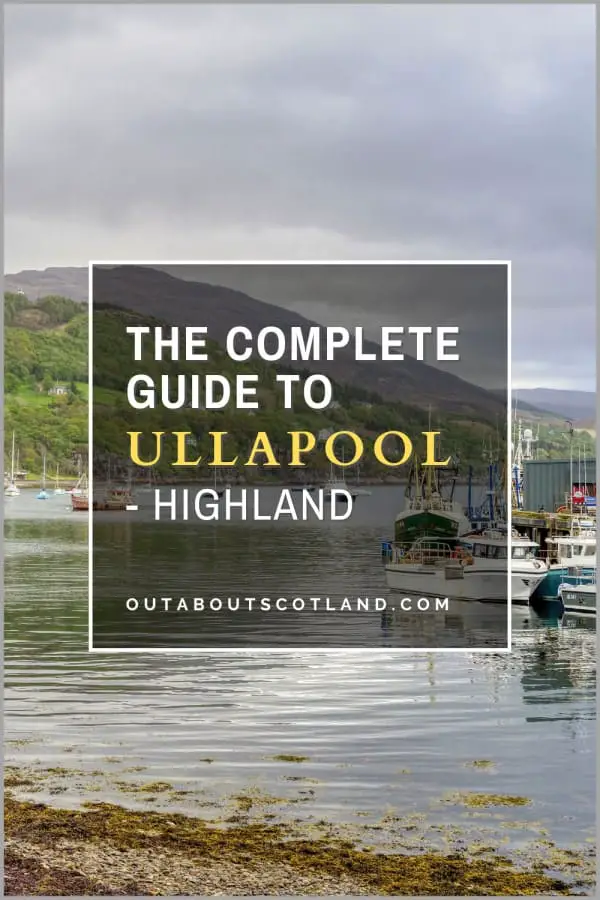The Highland Boundary Fault, a geological feature, separates the Highlands from the Lowlands in the northwest of Scotland. The Highlands are famous for their breathtaking scenery with lochs, mountains, and forests that offer activities for visitors of all ages and interests, whether they’re into hill walking, mountain biking, or wild camping.
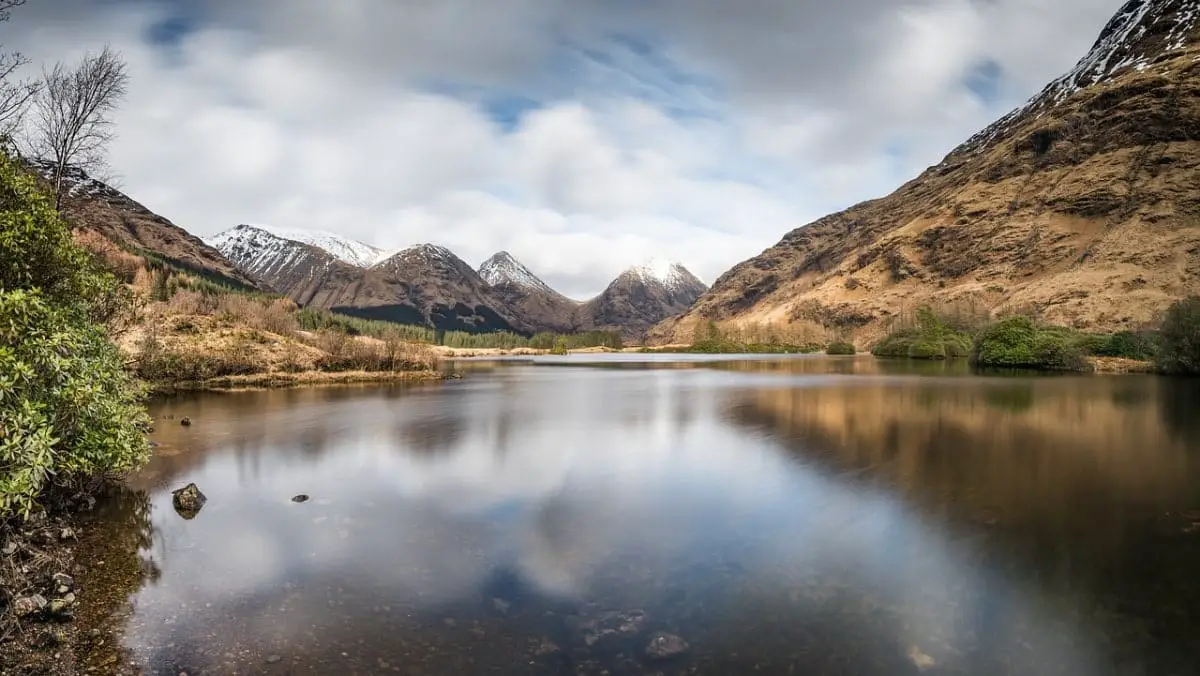
Touring the Scottish Highlands
The Highlands are what I like to think of as ‘the real Scotland’ because they have (mostly) escaped the clutches of tourism, and it’s still possible to roam for miles and miles without seeing another person – even in the height of summer.
In most places, the people of the Highlands still enjoy a traditional way of life with locals offering a warm welcome wherever you go outside the tourist hotspots, and it’s this friendly culture that ensures visitors return year after year. But it’s the landscapes that are the biggest draw for the 10 million annual day trips to the Scottish Highlands.
Head to Glencoe to admire the craggy peaks of Bidean nam Bian and you’ll instantly fall in love with the country, just like you will when you visit the spectacular landscapes of the Nevis Range, the Cairngorms, or the remote wilderness of Sutherland.
Or how about the world’s most famous body of water, Loch Ness, where you might be lucky enough to spot the elusive monster while standing next to the ruins of one of the most atmospheric castles in Scotland, Urquhart Castle?
Then again, maybe you prefer to lose yourself in the wilderness with a camera in hand, searching for red deer, golden eagles, and wildcats before heading to the coast to keep a lookout for whales, seals, and dolphins. Or perhaps you like your tourist attractions to have a historical theme, in which case Fort George and Dunrobin Castle will be at the top of your itinerary.
The only downside is that you might struggle to decide where to go first, which is why I’ve put together this guide that will show you the top-rated tourist attractions in this ever-popular region of Scotland.
Dunrobin Castle
- Address: Dunrobin, Golspie, Sutherland, KW10 6SF
- Contact details: Telephone 01408 633177
- Out About Scotland Guide: Dunrobin Castle
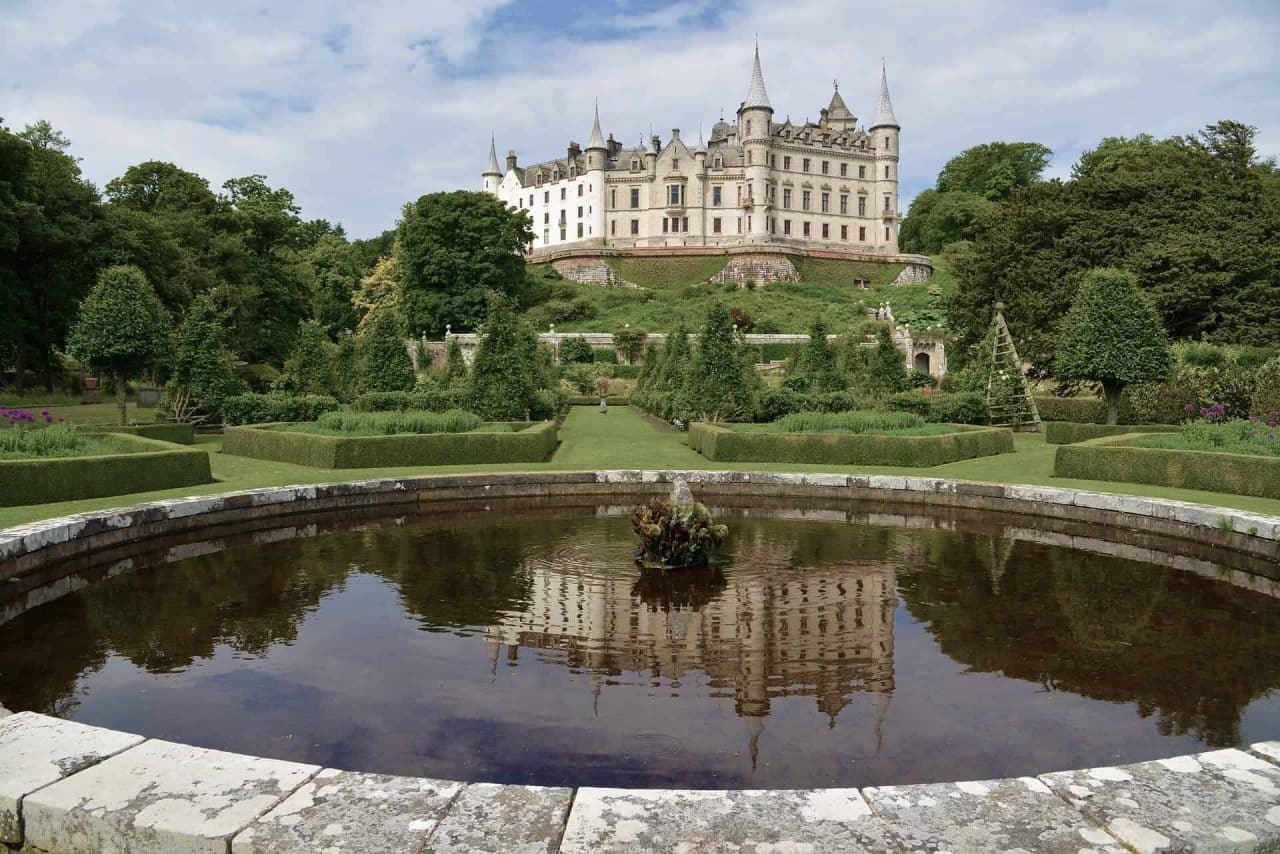
Dunrobin Castle has a history that stretches back over 700 years, from its humble beginnings as a simple square keep for the 13th-century Earl of Sutherland to the current fairytale palace that wouldn’t look out of place in a Disney cartoon.
Dunrobin is one of the northernmost country houses in Scotland. You’ll find other estates even further north (like the Castle of Mey in Sutherland), but you’ll struggle to find one as attractive as Dunrobin.
There are two parts to this castle that make it particularly tourist-worthy. First, there’s the castle itself, which you can walk around on a self-guided tour, and second, there are the manicured gardens overlooking the Moray Firth. These gardens were designed to look like the grounds of the Palace of Versailles, and you’ll find it hard to believe you’re still in Scotland if you visit on a sunny summer’s day.
Head inside the castle and you’ll be equally impressed, with each room beautifully laid out with paintings, tapestries, and fine carvings, but the highlight of a tour is visiting the Victorian museum in the old summer house. The museum is regarded as one of the finest private collections in Britain and it’s filled to the rafters with archaeological relics and animal displays, with many of the specimens brought back by the Dukes of Sutherland during their family safari over one hundred years ago.
The final highlight of a visit to Dunrobin is watching the falconry displays held on the lawn that feature some of the birds of prey you’re likely to see in the Highlands, including golden eagles and peregrine falcons. It’s a great show and the perfect way to round off a visit to this incredible stately home.
The Jacobite Steam Train
- Address: Tom-na-Faire Station Square, Fort William, Highland, PH33 6TQ
- Contact details: Telephone 0844 850 4685
- Out About Scotland Guide: The Jacobite steam train
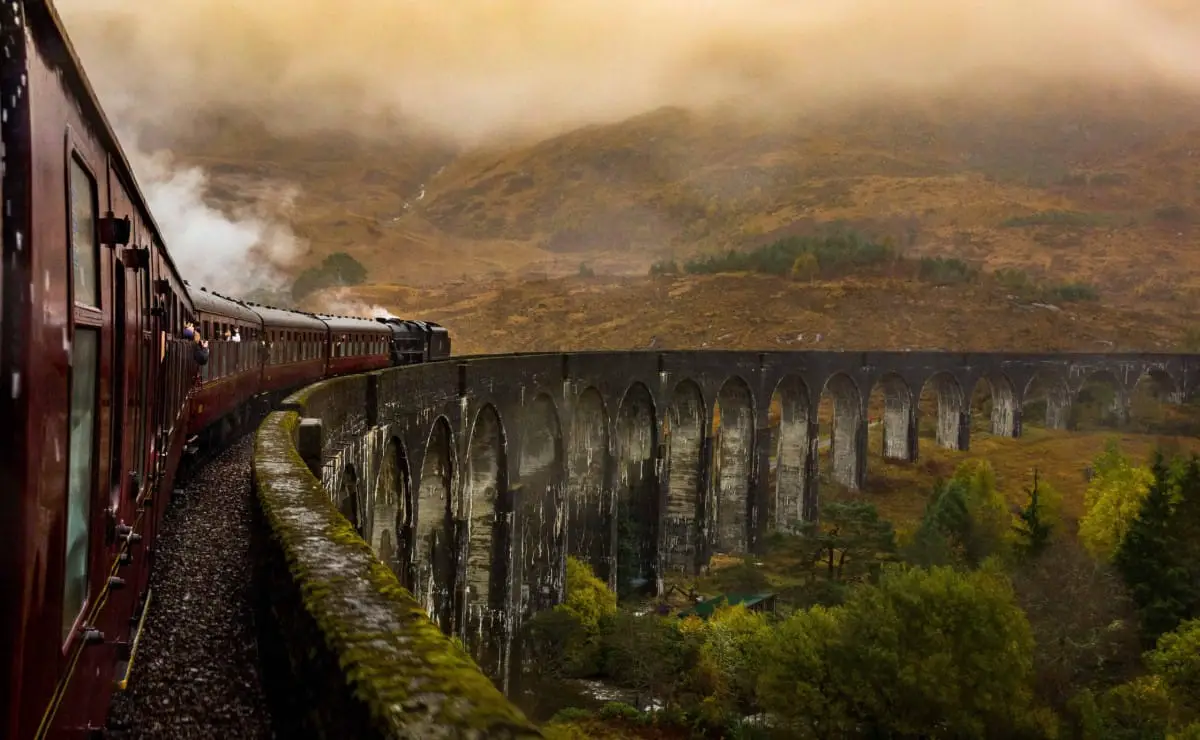
Unless you’ve been living under a rock for the last twenty years, you’ll have heard of Harry Potter and, more than likely, seen at least one of the movies. If you have, then you’ll have watched the scene where he’s transported across the Glenfinnan Viaduct on the Jacobite steam train.
Though visitors can’t buy a ticket for Hogwarts, they can at least take the non-magical train ride that starts at Fort William and continues through some of Scotland’s finest landscapes, passing lochs, mountains, glens, rivers, and coastline, alongside some of the country’s most memorable sights including Ben Nevis, Loch Morar, and, of course, Glenfinnan.
The steam locomotive was built in the late 1940s but it can trace its design back to the 1920s, while the carriages date from the 1960s, so a trip onboard is like taking a step back in time. You’re free to take your own drinks or you can purchase wine and a snack pack from the catering carriage, and there surely can’t be a better way to see Scotland than sitting in one of the yesteryear carriages with a glass of bubbly in hand.
You’re not stuck indoors for the whole journey though as there’s a stop at Glenfinnan station where you can get out and take a look around the West Highland Railway Museum before continuing your journey to Mallaig.
Once at the final destination you can disembark for around an hour before boarding for the return trip – which gives you just enough time to catch one of the boat tours that sail around Mallaig harbour. This is a superb location to watch seals and the occasional whale, and you’ll more than likely see Britain’s biggest bird of prey – the sea eagle – too.
Eilean Donan Castle
- Address: Dornie, Kyle of Lochalsh, IV40 8DX
- Contact details: Telephone: 01599 555202
- Out About Scotland Guide: Eilean Donan Castle
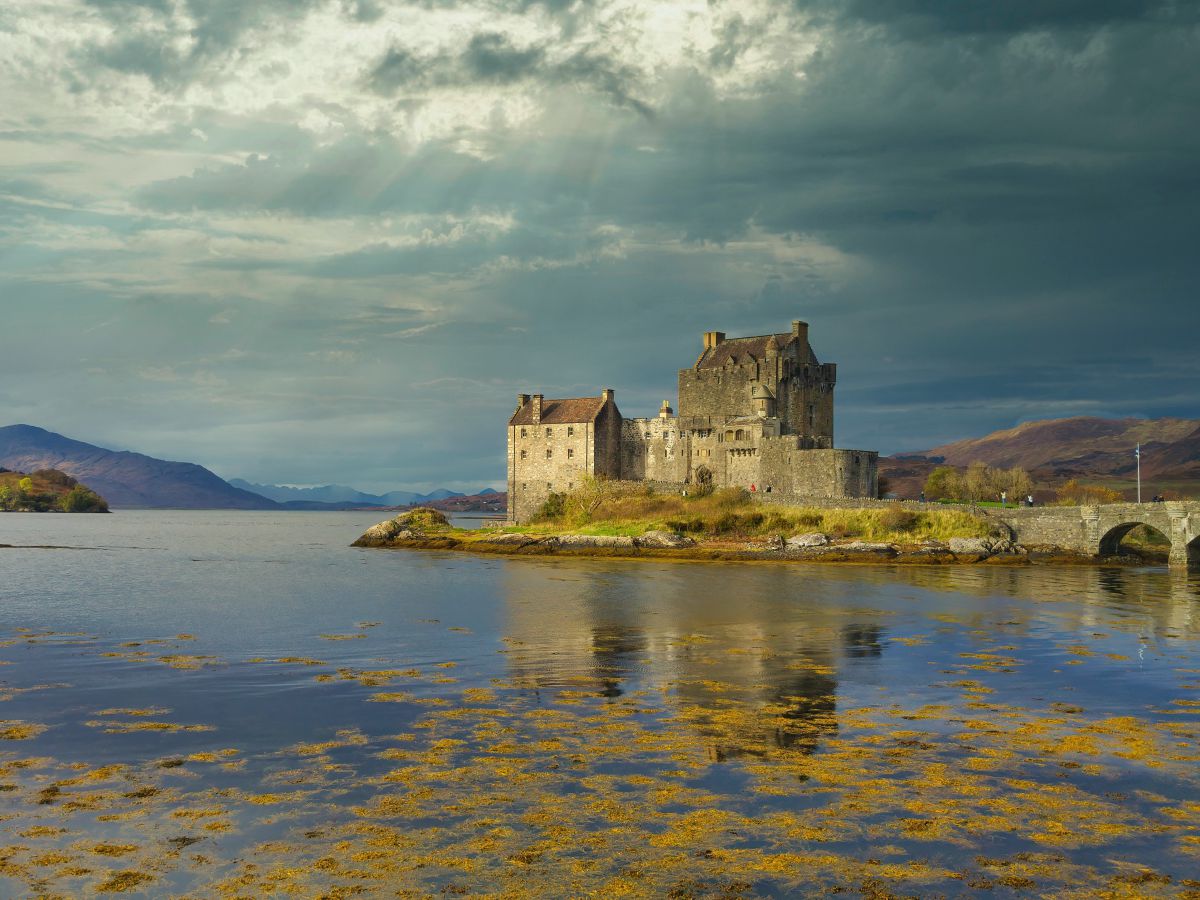
Eilean Donan Castle is one of those Scottish attractions that seems to pop up in photos all over the internet whenever you Google ‘places to visit in the Highlands’, and it’s probably the most iconic fortress in the country after Edinburgh Castle.
That’s something you’ll only really understand once you visit it, because the view of Eilean Donan Castle overlooking the lochs of Duich, Long, and Alsh sums up the best of the Highlands in one scene. A visit offers fascinating history, gorgeous landscapes in the surrounding Kintail National Scenic Area, and food and mementoes galore at the on-site restaurant and gift shop.
Basically, if you’re visiting Scotland for the first time, you pretty much have to put a trip to Eilean Donan Castle right at the top of your itinerary.
What you see today is actually a recreation that the MacRae family built a century ago to serve as the clan family home. Even though it’s a wee bit disappointing to find out that the castle is actually quite modern, it does at least have a lot of interesting history behind it, which you’ll discover during a self-guided tour.
The Macraes couldn’t have chosen a nicer site to build their ancestral home, and you can’t fail to be impressed by the details inside, with each room featuring collections of clan memorabilia, elaborately decorated furniture, and impressive racks of historic weaponry.
Glenfinnan Monument
- Address: Glenfinnan, PH37 4LT
- Contact details: Telephone: 01397 722250
- Out About Scotland Guide: The Glenfinnan Monument
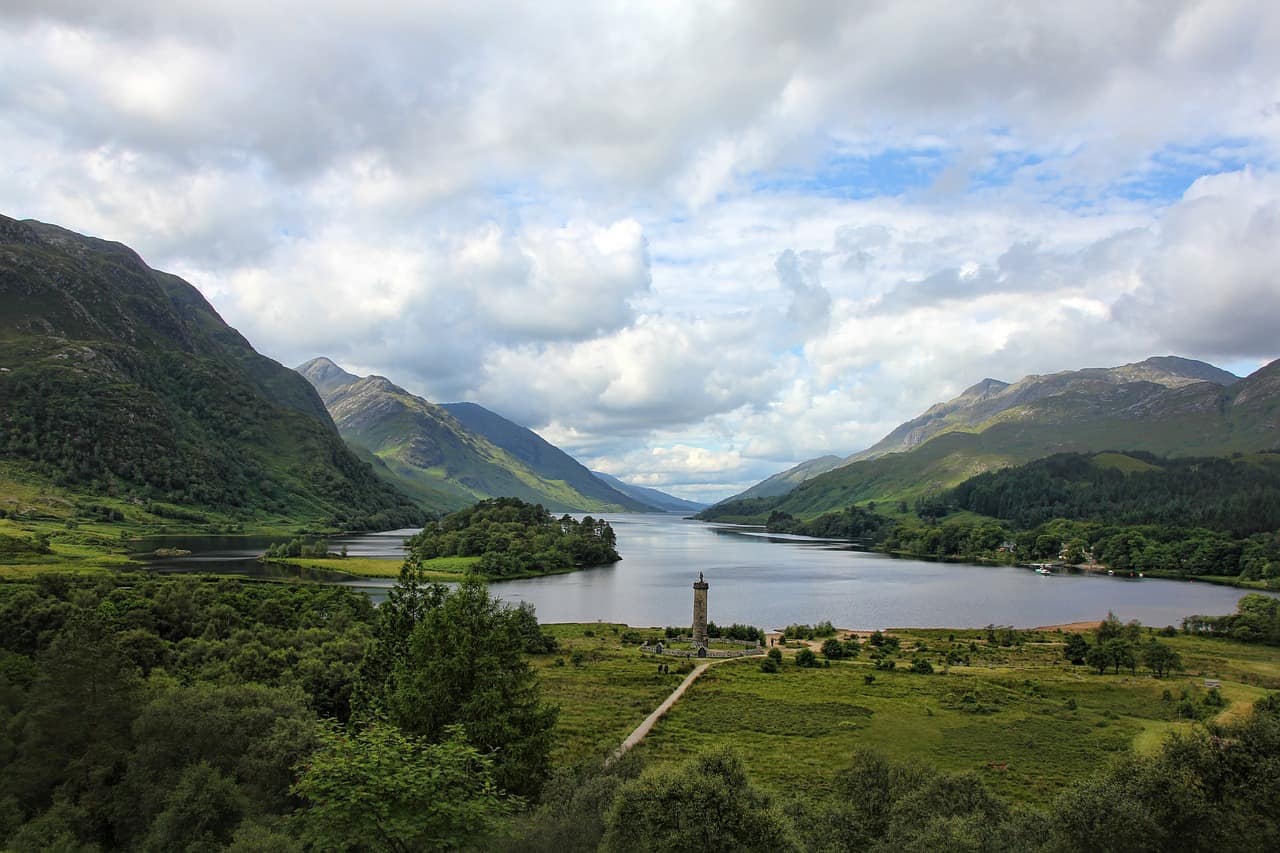
Glenfinnan is a village in the Lochaber region that’s best known for two major tourist attractions: the Glenfinnan monument and the Glenfinnan viaduct. It was on the banks of Loch Shiel in 1745 that Bonnie Prince Charlie raised his standard in front of the massed ranks of Highland clans and declared his intention to take the throne of the British Isles in the name of his father, James Stuart.
When government forces massacred the Jacobite army at the battle of Culloden in 1746, the uprising came to an abrupt end, so to commemorate this defining event in Scotland’s history, a memorial was erected in Glenfinnan at the site where the prince first rallied his troops.
The monument is a truly fascinating structure that’s certainly worth walking around, but for the best experience you should head to the nearby National Trust for Scotland visitor centre and book a guided tour to the viewing platform at the top.
The centre has a small museum inside along with a gift shop and snack bar, and it’s a great way to discover the story behind the ‘Bonny Prince’ and the reasons why the Highland clans rallied behind him. The other big attraction at Glenfinnan, in the opposite direction to the monument, is the Glenfinnan Viaduct which sweeps around the shore of Loch Shiel in a wide arc.
The viaduct was built in the late 1890s, and its 21 arches reach a height of over one hundred feet, but what makes it such a special place is the steam train that thunders over it on its way to the coastal town of Mallaig. The Jacobite train has been featured in several movies, but it became world-famous when it played the part of the Hogwarts Express that took Harry Potter to Hogwarts School of Witchcraft and Wizardry.
If you ever get the chance, I recommend purchasing a ticket to cross the viaduct on the steam train as the views are spectacular from start to finish.
Loch Ness
- Address: Fort Augustus, Highland
- Contact details: email info@enjoylochness.com
- Out About Scotland Guide: Loch Ness
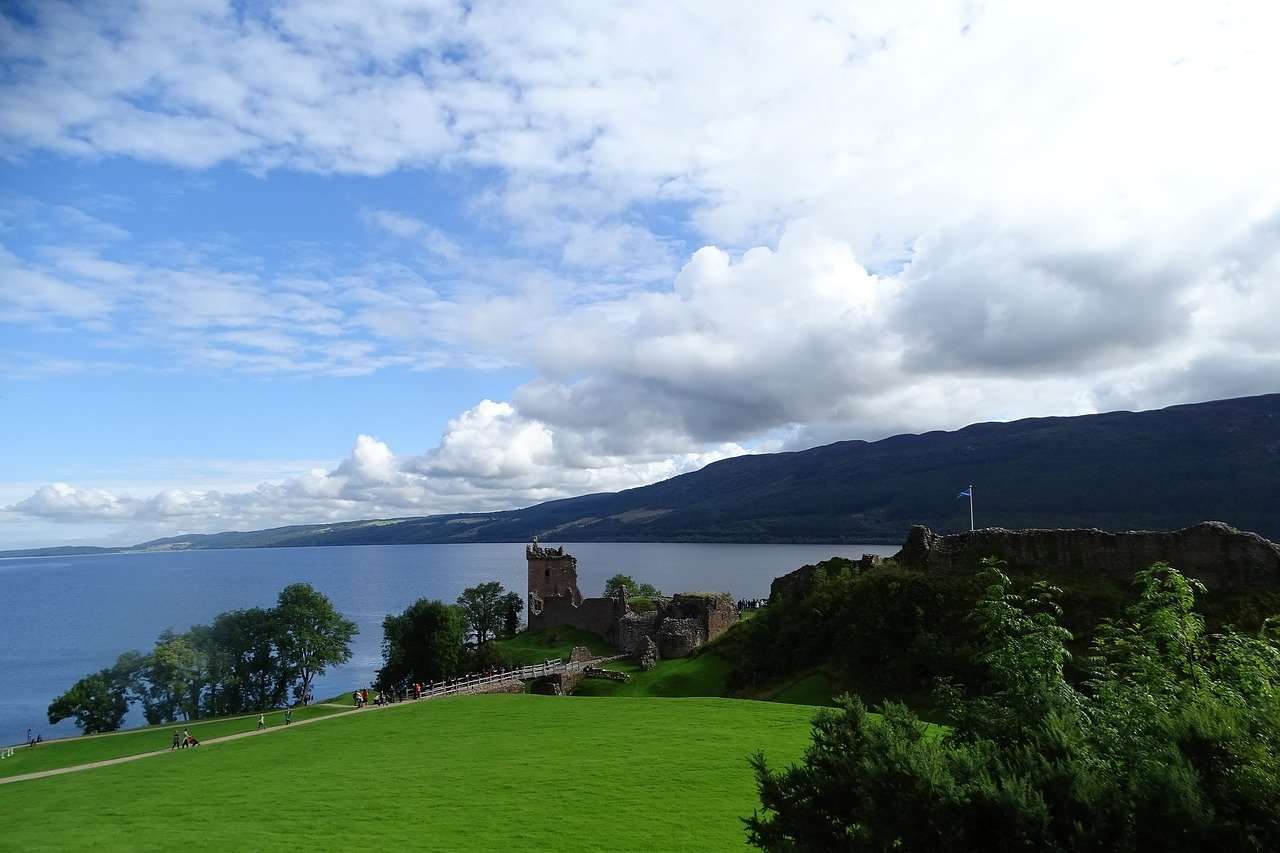
Is there anyone who hasn’t heard of Loch Ness, the deepest loch in Scotland, which contains more freshwater than all the lakes of England and Wales combined? A visit to this attraction has to be on every tourist’s itinerary if they intend to see the best bits of Scotland, not because of the monster legend, but because it’s an incredibly scenic place.
There are three popular points for exploring Loch Ness. The first is Fort Augustus at its southern end where you can board one of the many cruise boats that sail up and down it daily. The second is Urquhart Castle in the middle of the loch’s western shore where you can soak up the atmosphere of the ruins of one of Scotland’s most iconic fortresses. The third location is in the Highland capital of Inverness where you can explore the loch from its northernmost corner at the point where it joins the River Ness.
Either of these locations will give you a great experience and I highly recommend all of them, though if I were pushed, I’d suggest spending a little more time in Inverness as it’s such a nice city and has lots of attractions that can easily be combined with a search for the elusive monster.
However, many tourists don’t venture that far and instead prefer to base themselves in Fort Augustus, as it’s an ideal stop-off point for cruise boats touring the 60-mile Caledonian Canal. This waterway is one of the most picturesque in Scotland, especially between the Beauly Firth on the northeast coast and Loch Linnhe on the west.
Urquhart Castle
- Address: Drumnadrochit, Inverness, IV63 6XJ
- Contact details: Tel 01456 450 551
- Out About Scotland Guide: Urquhart Castle
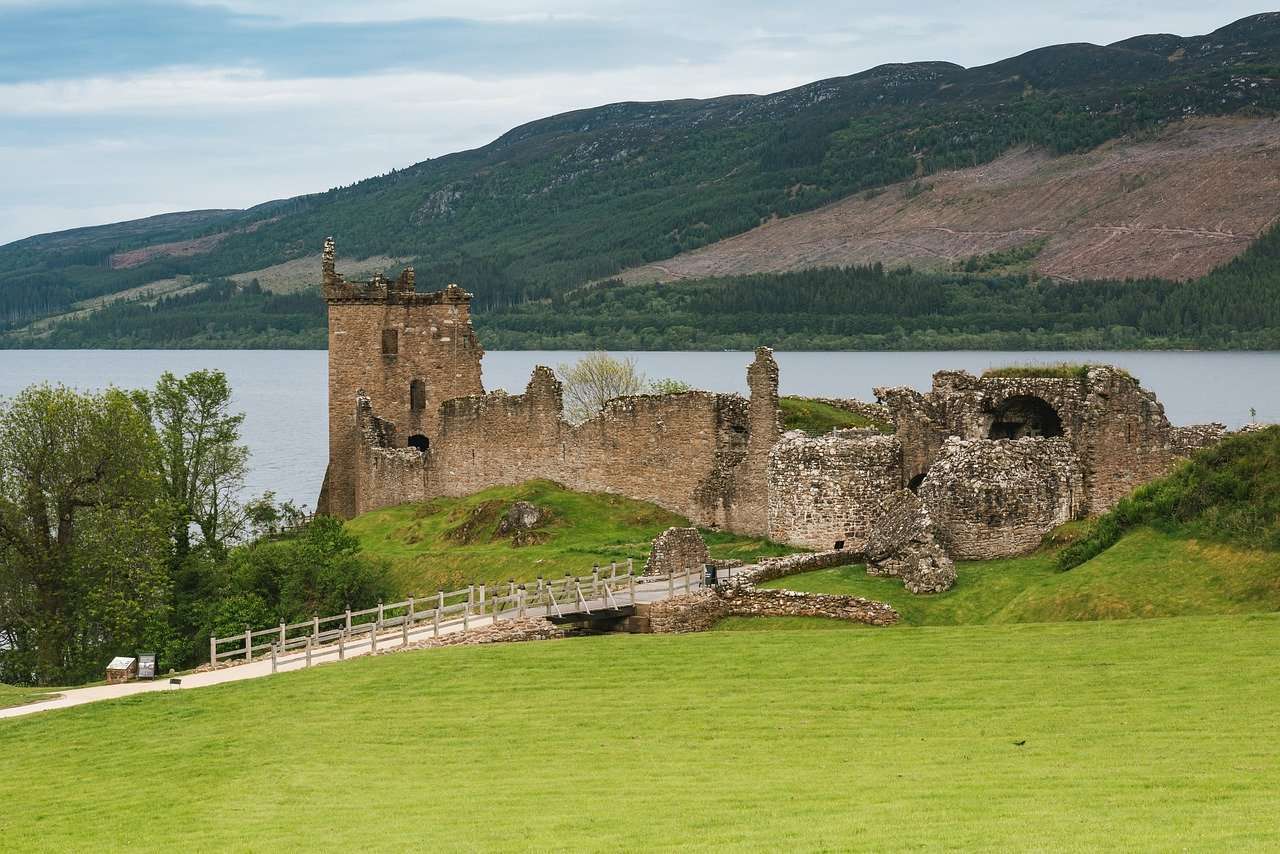
Loch Ness is one of the most-visited places in Scotland, so it’s just as well there are so many activities and things to do in the surrounding area. In addition to the historic towns of Inverness and Fort Augustus which lie at either end of the loch, visitors to Loch Ness can enjoy boat cruises, lochside walks, and a number of historic attractions including the most famous of them all, Urquhart Castle.
Although it’s now almost entirely in ruin, at one time this castle was one of the most strategically important in Scotland and was fiercely fought over for hundreds of years. Its current ruined state is the result of British government troops destroying it in an attempt to stop it from falling into the hands of raiding Highland clans.
Even without all that history, Urquhart Castle would no doubt still be one of Historic Environment Scotland’s most-visited sites, for no other reason than the views of Loch Ness from the ruined battlements which are nothing short of stunning.
HES has done a remarkable job of renovating the castle, and they’ve added one of the best visitor centres in the Highlands, which features an exhibition about the loch, an excellent gift shop, and a superb café with outside terrace seating. On the grounds, children will be amazed by the life-size trebuchet, and adults will have a memorable time walking through the ruins and gazing out at the glassy waters of Loch Ness.
The only downside is that, because it’s such a famous attraction, it gets very busy in the summer, especially at the weekend. That being said, visiting outside of school holidays will allow you to see the castle with much smaller crowds.
Bealach na BA
- Address: Strathcarron, IV54 8LX
- Contact details: NA
- Out About Scotland Guide: The Bealach na Ba
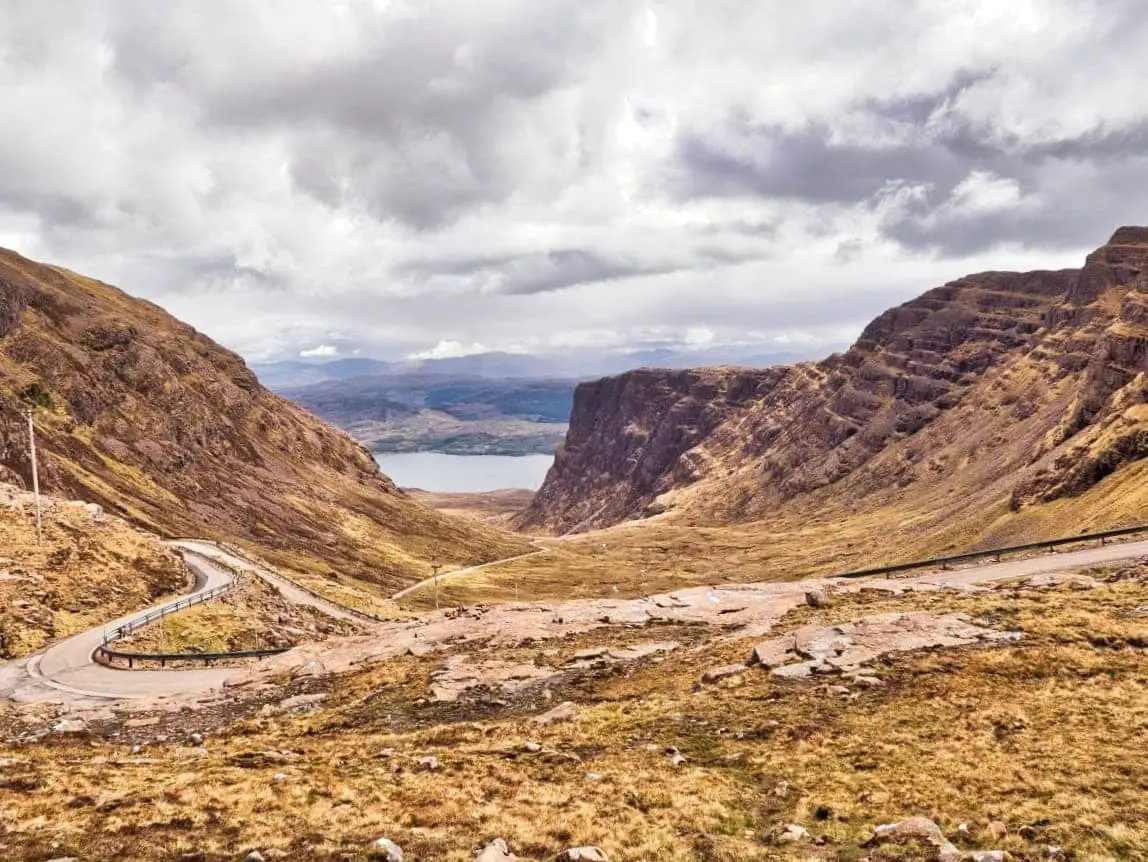
The Bealach na Ba is one of the steepest, wildest, and most beautiful mountain passes in Europe. This remote area of the Applecross peninsula is known for its stunning mountain ranges, and many visitors go there simply to set off on foot through the mountainous expanse of what is regarded as one of the last great wildernesses in Britain.
Many more though, visit the area on a driving tour of the North Coast 500, with the road known as the Bealach na Ba among the best-known sections of the 500-mile route. Alternatively known as ‘the pass of the cattle’, the Bealach na Ba is a single-track tarmac road that winds its way up dramatic mountain peaks to a height of 2,000 feet before levelling off at the summit and gradually sloping down to the village of Applecross on the other side.
Driving it is a hair-raising experience and one that’s not to be taken lightly, especially considering some sections have 180° hairpin bends that give the Alpines a run for their money. As a driving experience, the Bealach na Ba is something that every car-lover needs to experience, but there are just as many two-wheeled vehicles that enjoy traversing the 45-mile road – and that includes cyclists.
Whatever your mode of transport, once at the top, you’ll be presented with breathtaking views across the sea to the islands of Skye, Raasay, and Rum, and it’s possible to explore the surrounding mountains on a number of walks including the popular route to the summit of Sgurr a Chaorachain.
Bidean Nam Bian
- Address: Ballachulish, PH49 4HX
- Contact details: NA
- Out About Scotland Guide: Bidean nam Bian

The county of Argyll is a favourite with hill walkers thanks to its stunning mountain ranges which include Glencoe and the famous ‘three sisters’. These mountain ridges are a popular route because they offer a number of challenges for hill walkers of all skill levels, and the views from the summits are widely regarded as the best in Scotland, especially from the mountain peak of Bidean nam Bian, which is officially the highest mountain in Argyll.
The summit of Bidean Nam Bian is 3,800 feet (1.16 km) high, so climbing to the top is quite a challenge, but thankfully there are several flat plateaus on the ascent that offer welcome places to take a break.
The most-used path starts from the car park on the A82 next to Loch Achtriochtan and follows an old track towards Coire nan Lochan. It deviates up the north face of the mountain, which is covered in boulders but is a fairly straightforward ascent, and there are a number of waterfalls along the way that are extremely photo-worthy.
Visitors who make it halfway up the side of the mountain will be presented with stunning views of Glencoe, while those that push on up the scree-covered slopes will be rewarded with an even more beautiful sight from the summit of Stob Coire nan Lochan.
However, be aware that inexperienced hill walkers shouldn’t attempt this climb, especially in winter when the mountainside becomes hazardous due to a thick layer of loose rocks. Hill climbers who are experienced enough to attempt all three ridges of the three sisters can expect the 6.75-mile (11 km) route to take approximately 8 hours, while those who are happy to double-back at the first waterfall can expect the return climb to be completed in 3 hours.
| Scottish Highlands Sightseeing Advice |
|---|
| Planning to visit the Highland’s top attractions? You’ll save time and money by pre-booking a guided tour. |
| See the very best of the Scottish Highlands with an experienced guide who will do the driving for you as well as tell you all about Scotland’s fascinating sights. Visit iconic places like Loch Ness and Glencoe on a relaxed 12-hour tour from Edinburgh or Glasgow. |
| Book a Highland tour from Edinburgh. Book a Highland tour from Glasgow. |
Cairngorm Mountain
- Address: Aviemore, PH22 1RB
- Contact details: Cairngorm Mountain Centre telephone 01479 861261
- Out About Scotland Guide: Cairngorm Mountain Funicular Railway
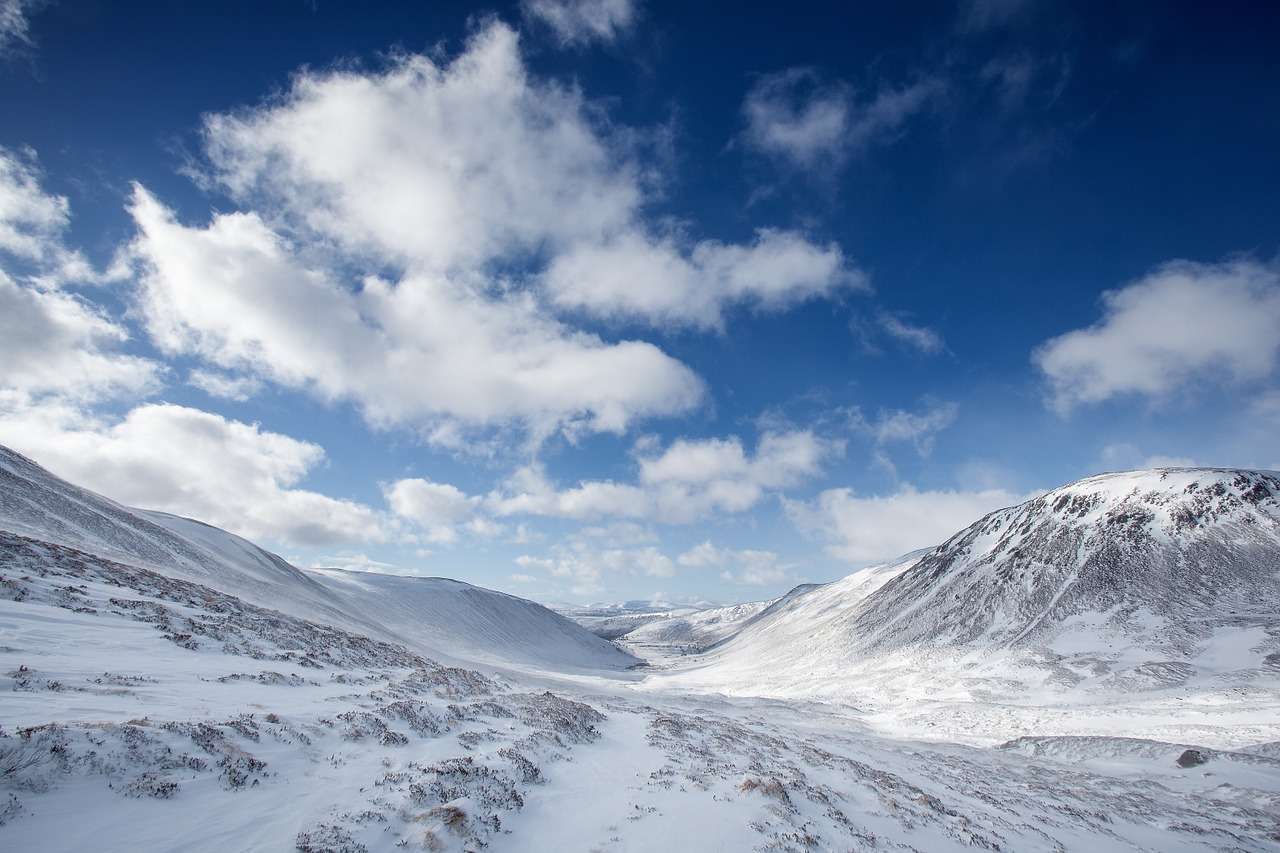
The Cairngorms National Park is the largest in the UK, covering 1,748 square miles across the regions of Aberdeenshire, Moray, Highland, Angus and Perth & Kinross. While this vast wilderness is full of lush forests and tranquil lochs, it’s the Cairn Gorm mountain plateau that draws the majority of visitors who are keen to explore the spectacular ridge.
This famous mountain is actually the seventh-highest mountain in Britain – reaching 4,084 feet – and it’s just as well known for its adrenaline-fuelled snow sports activities as it is for its walking routes that run across the entire Cairngorm range.
One of the best ways to experience the incredible views that Cairn Gorm has to offer is to take the funicular railway from the visitor centre at the base of Coire Cas on the north-western slope to the Ptarmigan Top Station over three thousand feet above. From there you’ll get views right across the Cairngorms with Loch Morlich in the near distance, and it’s worth the funicular ride just for the experience of sitting in the café terrace and soaking up the view.
While you can’t exit the top station unless you’re taking part in snow sports activities, you can at least enjoy the restaurant and shops while you’re there. If you want to hike up the mountain there are paths that lead to Coire an t-Sneachda (one of Britain’s most accessible high mountain corries), though it can be a tricky walk in winter so I recommend you grab a map from the Cairngorm Mountain Visitor Centre before departing.
Culloden Battlefield
- Address: Culloden Moor, Inverness, IV2 5EU
- Contact details: Tel 01463 796090
- Out About Scotland Guide: Culloden Battfield
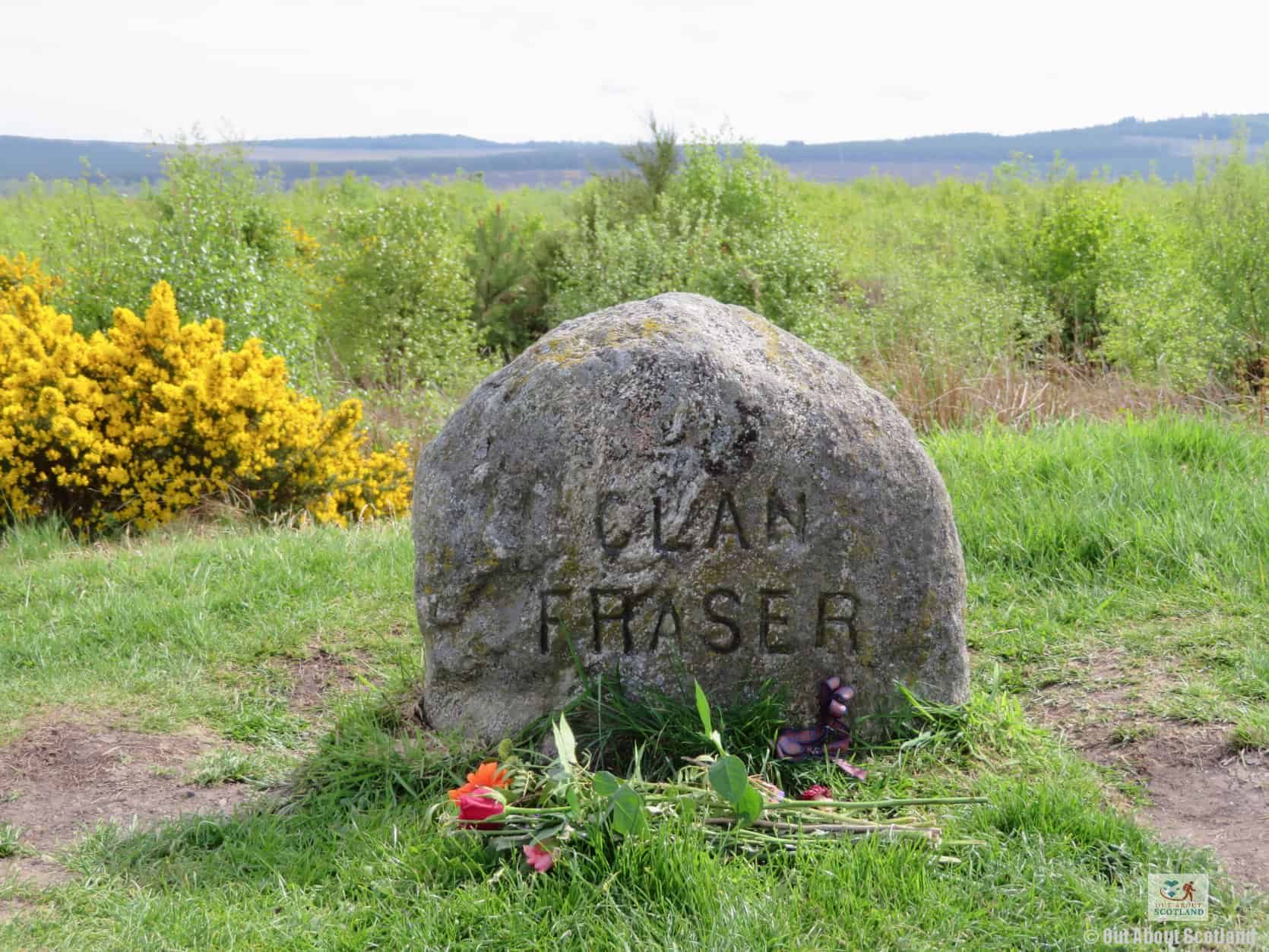
The Jacobite uprising of 1745 came to a bloody end at the Battle of Culloden, where government forces shot and killed 1,500 Jacobites in less than one hour. The battle led to the end of the traditional Highland way of life and saw the clans that ruled the Highlands come under the rule of the British government. It also saw their leader, Charles Edward Stuart, run for his life to France, never to return to Scotland.
Today, the battle and its repercussions are examined in detail at the high-tech Culloden visitor centre which brings the events of the conflict back to life through a number of interactive exhibits and displays. Inside the centre, visitors can see exactly how the battle unfolded and where each army stood before heading outside onto the actual battlefield to see the battle lines.
Heading back to the National Trust for Scotland visitor centre, there are all the modern facilities tourists could wish for including a restaurant, café, and a gift shop, and while these areas are free to visit (as is the battlefield), the interactive exhibits have an entrance fee. However, if you hold a National Trust for Scotland membership you will gain access to the site and hundreds more like it for free.
Become a National Trust for Scotland member today.
Fort George
- Address: Ardersier, Inverness, IV2 7TD
- Contact details: Telephone 01667 460 232
- Out About Scotland Guide: Fort George
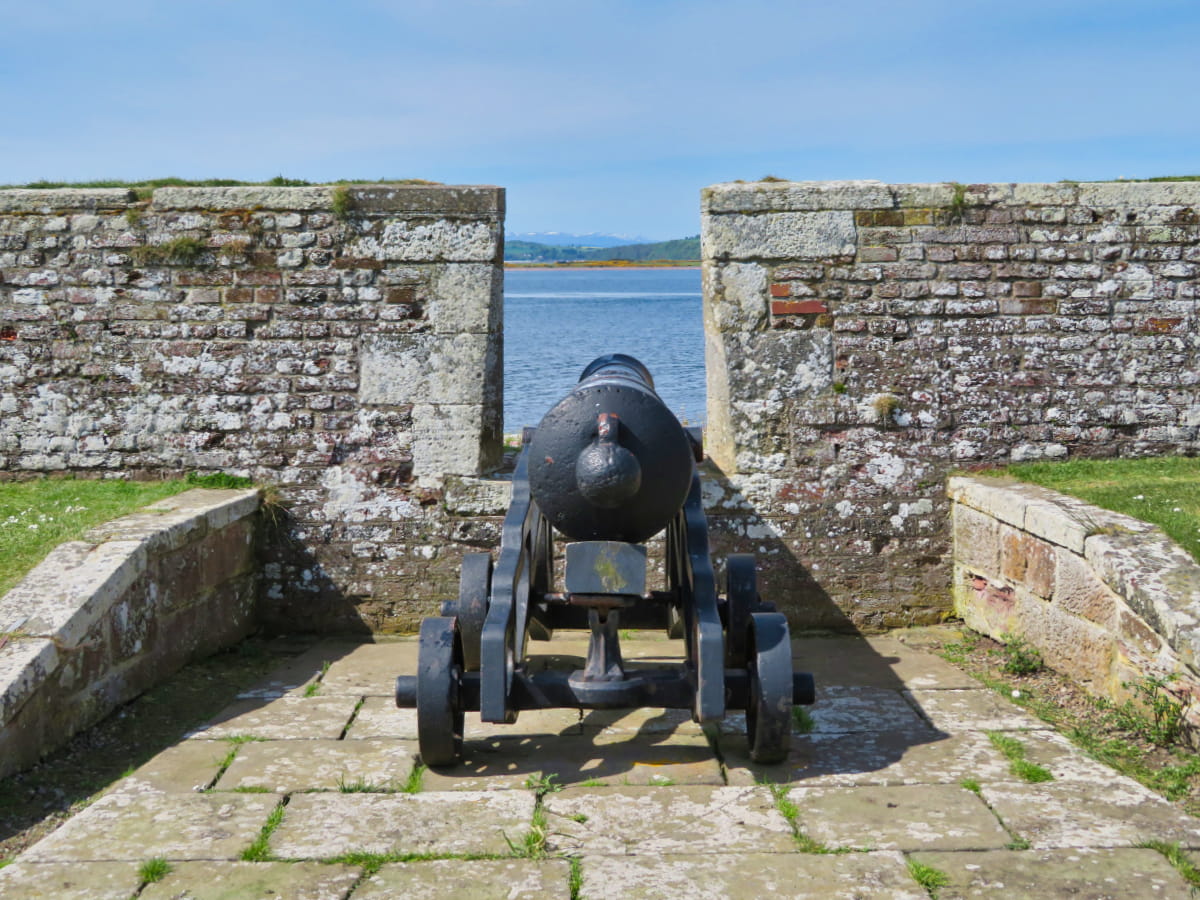
If you ever visit the Highland capital city of Inverness there are two nearby attractions that you should definitely take the time to see. The first is Loch Ness which lies to the south of the city, and the second is Fort George, the 18th-century military fortification that lies to the north.
As a result of its construction to thwart any further uprisings following the battle of Culloden, this fort serves as a stark reminder of the threat the British government perceived from the Jacobite rebellion. The fort is absolutely enormous, and it’s amazing to think that the garrison buildings and mile-long perimeter wall are over 250 years old. But perhaps what’s even more amazing is the fact that it’s still in use by the British Army today.
There’s a lot to see at this attraction with regimental museums, recreated 18th-century barracks, a regimental chapel, and defensive platforms armed to the teeth with cannons on the lookout for invading armies coming from the Moray Firth. These platforms are a fantastic place for sightseers, not just because of the military memorabilia but also because they offer stunning views of the area.
It’s a great wildlife spotting site as well, thanks to the dolphins that swim past on their way to Chanonry Point and Ardesier, so if it’s a clear day and you visit the fort, make sure you take your binoculars and camera with you, as you’re bound to see the dolphins playing in the sea.
After a walk around the perimeter of Fort George it’s time to head inside the buildings where you can discover the history of the Jacobite uprising with displays and exhibitions in the Magazine and the Highlander’s Museum. Both museums are exceptionally well presented – as you’d expect from Historic Environment Scotland – but the Magazine is particularly interesting as it’s home to what is arguably the finest collection of historic weaponry in Scotland.
| Scottish Highlands Sightseeing Advice |
|---|
| Planning to visit the Highland’s top attractions? You’ll save time and money by pre-booking a guided tour. |
| See the very best of the Scottish Highlands with an experienced guide who will do the driving for you as well as tell you all about Scotland’s fascinating sights. Visit iconic places like Eilean Donan Castle, Loch Ness, Glencoe, and the Isle of Skye on a relaxed 3-day tour from Edinburgh or Glasgow. |
| Book a Highland tour from Edinburgh. Book a Highland tour from Glasgow. |
Glencoe Visitor Centre
- Address: Glencoe, Argyll, PH49 4HX
- Contact details: Telephone 01855 811307
- Out About Scotland Guide: Glencoe Visitor Centre
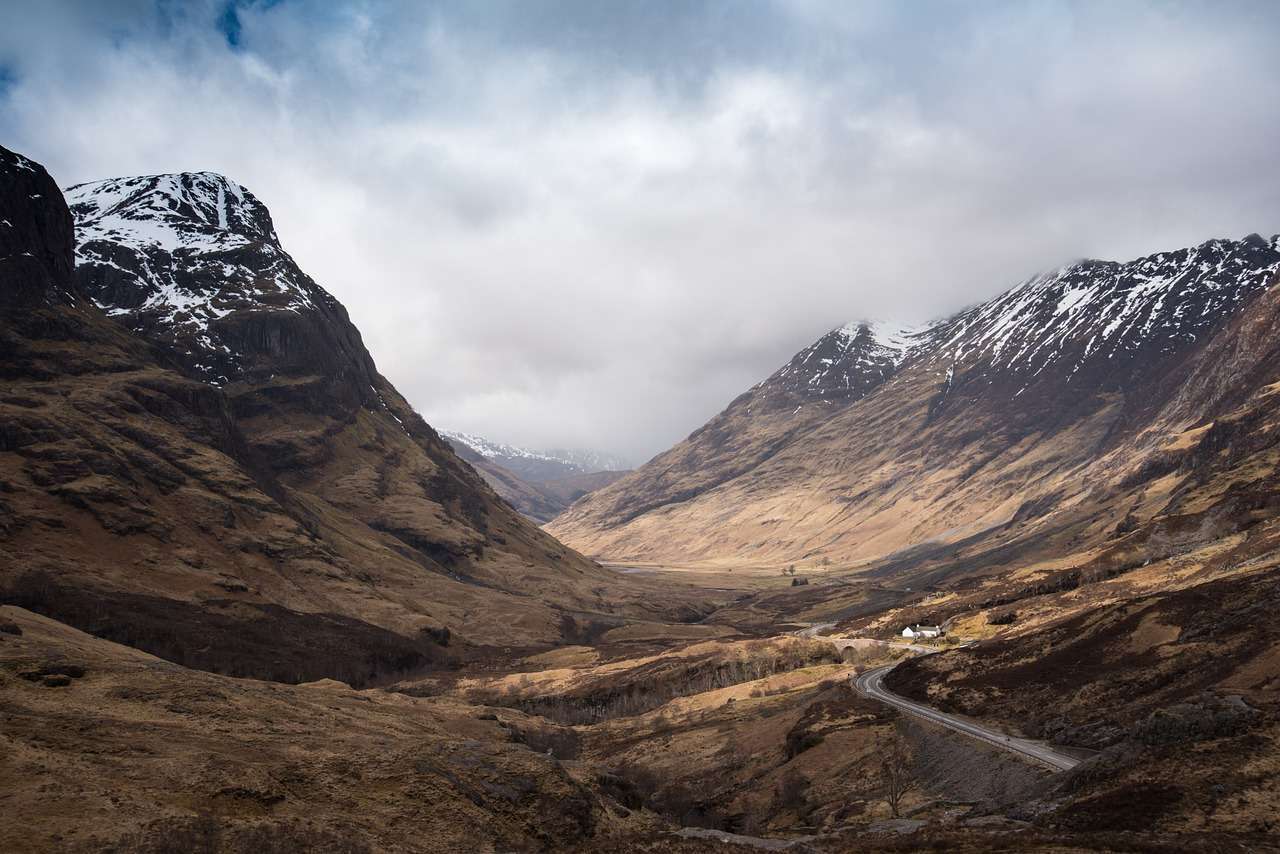
Scotland is home to a diverse range of beautiful landscapes, from the hauntingly desolate wilderness of Rannoch Moor to the peaceful forests of Perthshire’s ‘big tree country’, but one place that tops all others for stunning scenery is Glencoe. The glen is often cited as being located in Scotland’s most scenic area, and I think the fact that it attracts so many visitors each year is proof that the grandeur of its surrounding mountains is more than worthy of a visit.
Visitors can get to know this extraordinary landscape from the National Trust for Scotland visitor centre which features a shop and a café as well as exhibitions about the area and its history. They can then head out into the wilds of Glencoe to explore the area on a number of walking routes.
If you ever drive through Scotland on the A82 (one of the best road trips in the country, in my opinion) you’ll see Glencoe from Rannoch Moor where the mighty peak of Buchaille Etive Mor can be seen rising into the clouds with the ridges of Beinn Fhada, Gearr Aonach and Aonach Dubh to the south. Behind these ridges, you’ll find the highest point in Argyll where the vast Bidean nam Bian mountain dominates the surrounding landscape.
While the 2 1/2 mile route into the mountains is quite a scramble up steep scree-covered slopes, the views from the trail are nothing short of jaw-dropping and you’ll cross tumbling waterfalls and deep ravines along the way. But if that sounds like a bit too much hard work you can always stay near the car park and walk around Loch Achtriochtan instead.
Glen Etive
- Address: Ballachulish, PH49 4JA
- Contact details: NA
- Out About Scotland Guide: Glen Etive
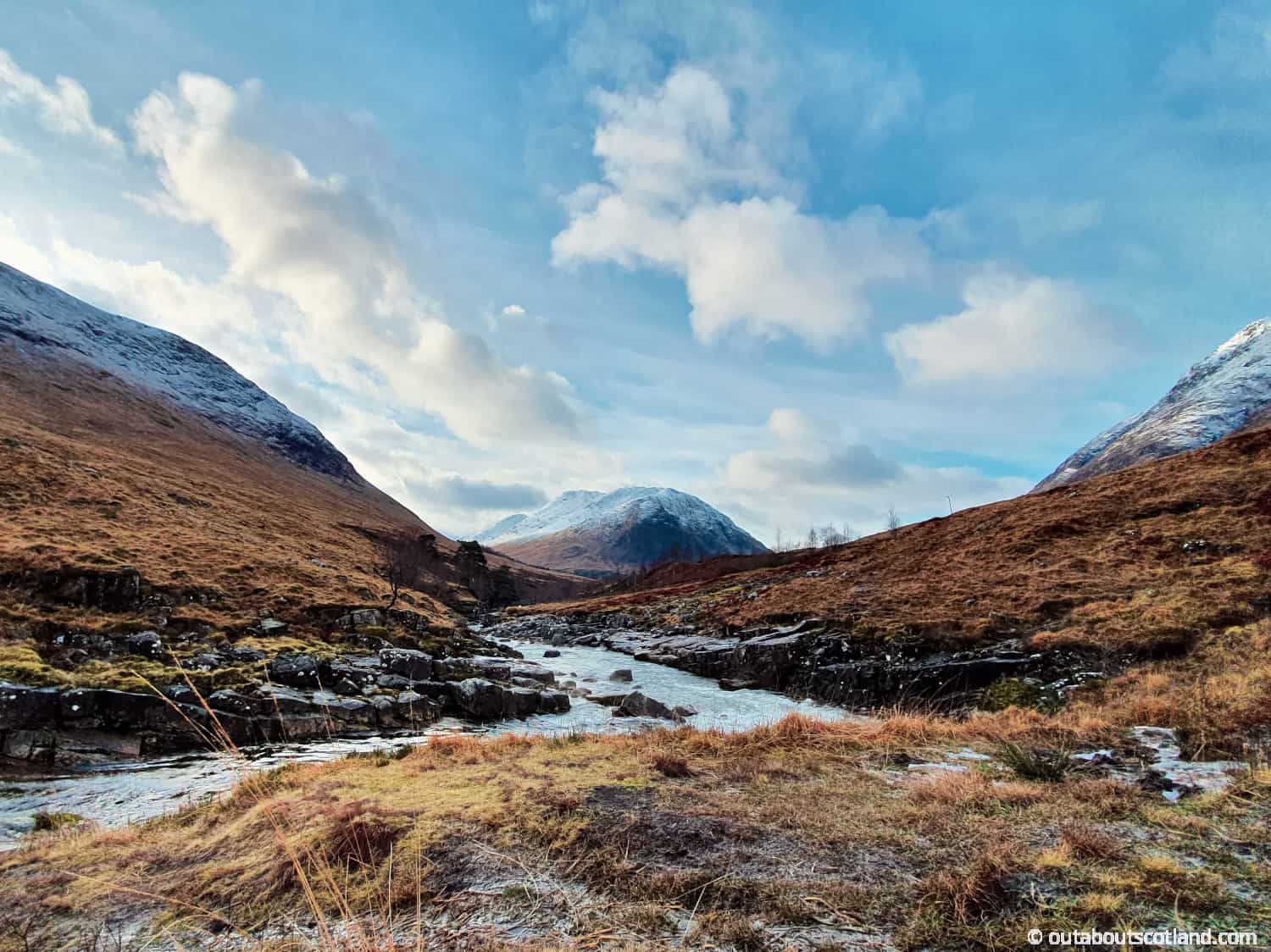
The A82 has to be one of the best roads in Scotland for touring, and it’s one that easily rivals anything the North Coast 500 has to offer. The sights along this stretch of tarmac are nothing short of breathtaking – especially once you get into Rannoch Moor – but there’s an often-missed side-road that leads somewhere even more spectacular.
The road in question can be found west of the Glencoe Mountain Resort, where a sharp turn takes adventurous drivers into Glen Etive. The single-track road that runs through the glen continues for 12 miles (19 km) alongside a gentle river that eventually opens up into the vast Loch Etive.
Along the way are a multitude of lush forests and snow-capped mountains, with the open expanse of the glen disappearing into the distance as far as the eye can see. It’s an incredibly scenic place.
Because Glen Etive is so frequently visited, the wildlife in the area has become quite used to people, meaning it’s one of the few places in this part of Scotland where you can get close to herds of wild red deer. There’s every likelihood you’ll also see eagles soaring overhead, so if I have any advice to offer for a visit, it’s to take a good pair of binoculars with you (link to binocular reviews).
The Highland Wildlife Park
- Address: Kincraig, Kingussie PH21 1NL
- Contact details: Telephone 01397 722250
- Out About Scotland Guide: The Highland Wildlife Park
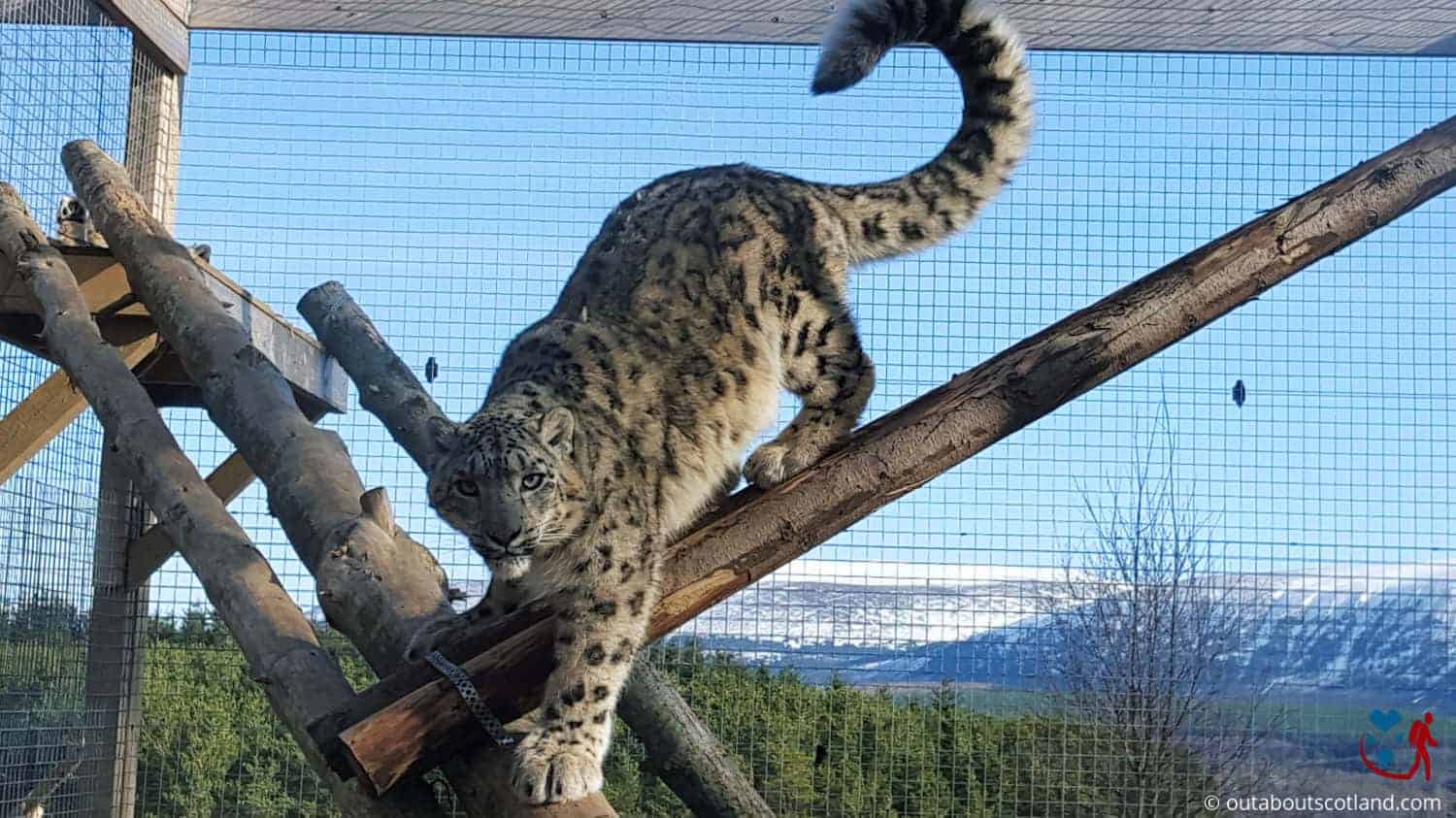
The RZSS are known for their conservation work at Edinburgh Zoo where they work tirelessly to promote public awareness of the plight of many of the world’s endangered animals. But you might be surprised to know they also work with animals from closer to home, and at the Highland Wildlife Park in the Cairngorms you’ll get to see enclosures designed to replicate the habitats of arctic tundra and mountains, just like you get in the remote areas of the Highlands.
Head inside the main area and you’ll see Siberian tigers, Arctic foxes, lynx, wolverines, snow monkeys, and the stars of the show – polar bears. While the walk-around area is what most people consider the main section of the park, there’s an equally large area that you can drive through on a Highland safari. Thankfully, they don’t let the polar bears roam free, so the biggest threat you’ll face is getting a hard stare from one of the roaming bison.
Just like in Edinburgh Zoo, the Highland Wildlife Park has an educational side to it and you’ll frequently find keeper demonstrations and interactive talks throughout the day. In addition, there are lots of information panels at the enclosures so you can learn about each species as you make your way around the site.
If you’re a photographer, you might want to participate in one of the photographic days where you can tour the park with your camera and a keeper by your side, or you might prefer to attend the feeding times and watch the keepers feed the animals. If you get a bit peckish yourself, you’ll be pleased to know there are lots of places to eat in the park, along with the standard coffee shops and vending kiosks, and there’s also a decent shop if you fancy taking home your very own (stuffed) polar bear.
Loch Morlich
- Address: Loch Morlich, near Glenmore village, PH22 1QU
- Contact details: Telephone 01479 861220
- Out About Scotland Guide: Loch Morlich
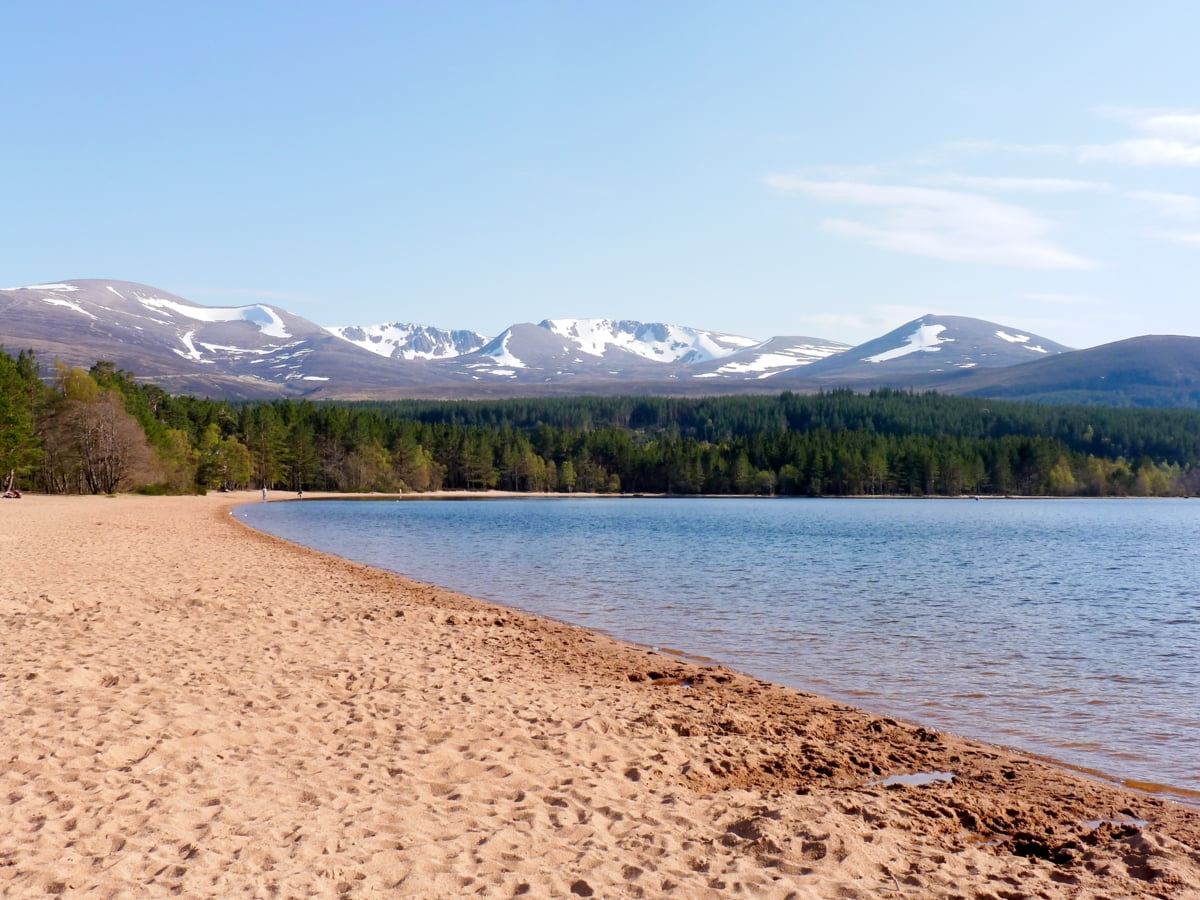
This natural body of fresh water is located at the base of the Cairngorm mountain range a few miles from Aviemore. The Loch is just a short detour off the B970 if you’re visiting Aviemore, so if you’re ever in that neck of the woods (no pun intended), I recommend you take a look.
Loch Morlich is one of the highest bodies of water in the UK and it has a definite alpine feel to it, especially if you stand on the shore in winter and look up at the snow-capped mountain peaks rising up from the outskirts of the pine forest.
It also has a wide sweeping arc of golden sand on its northern shore which is perfect for summer picnics, and if you’re a watersports fan you can enjoy windsurfing, kayaking, paddle boarding and sailing thanks to the watersports centre that hires out a range of equipment.
If you’re not feeling active you can sit back and enjoy lounging around on the UK’s highest beach, or simply go for a walk through the extensive National Nature Reserve in Glenmore forest. There’s also a visitor centre and café just down the road, and it’s just a 20-minute drive into the centre of Aviemore with its pubs, bars, and restaurants if you’re staying in the area in the evening.
The Loch Ness Centre and Exhibition
- Address: Drumnadrochit, Loch Ness, Inverness-shire, IV63 6TU
- Contact details: Tel 01456 450573
- Out About Scotland Guide: The Loch Ness Centre
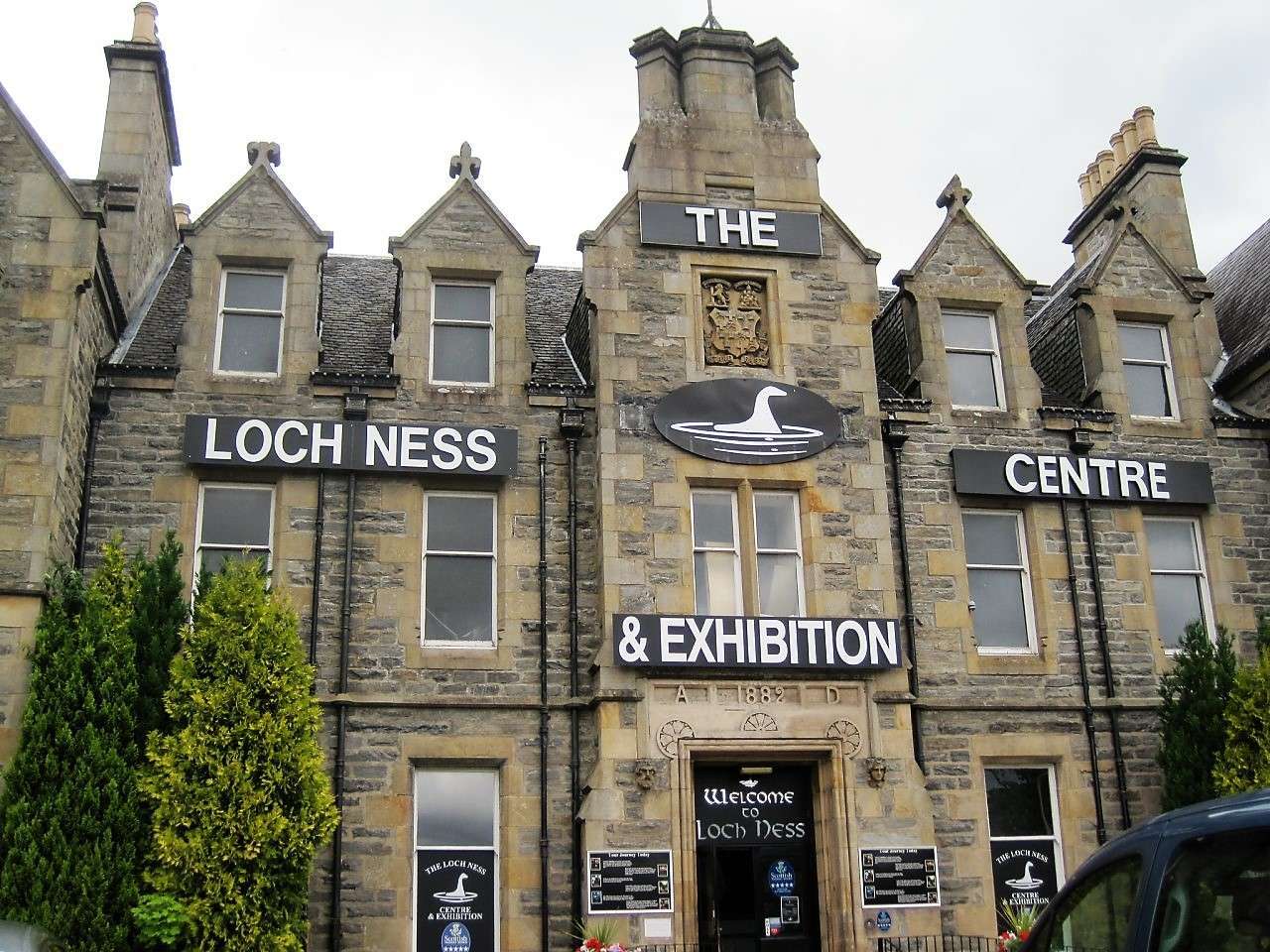
Everyone has heard of Loch Ness and the mythical creature that’s supposed to hide deep at the bottom of its murky depths. Countless tales have been told over the years about Nessie, and an entire industry has grown around the shy creature and the murky waters it supposedly lives in.
It’s no surprise then, that one of the most popular tourist attractions in the area is an exhibition devoted to the loch and its monster, but this is one attraction that’s designed to educate as much as entertain.
The Loch Ness Centre and Exhibition aims to inform visitors about the history of the loch so that people are free to make up their own minds about the legend based on hard scientific facts. The exhibition also displays anecdotal evidence from the many hundreds of people that have claimed to have seen the monster over the years.
During a visit you will learn about the geology of the area, the incredible vastness of the loch, and the supposed underground waterways that are said to connect Loch Ness with the Moray Firth and the North Sea. There’s a lot of memorabilia to look at too, including boats that have sailed on the loch and scientific equipment that has been used over the years in the hunt for the elusive Nessie.
There’s a gift shop and a café should the weather close in, while boat cruises can be organized from the centre on a small craft that has high-tech sonar equipment installed. Who knows, you might even see a glimpse of Nessie on the sonar screen during your voyage.
| Scottish Highlands Sightseeing Advice |
|---|
| Planning to visit the Highland’s top attractions? You’ll save time and money by pre-booking a guided tour. |
| See the very best of the Scottish Highlands with an experienced guide who will do the driving for you as well as tell you all about Scotland’s fascinating sights. Visit iconic places like Loch Ness, Glencoe and Ben Nevis on a relaxed 12-hour tour, or pre-book a cruise around Loch Ness. |
| Book a Highland tour from Edinburgh. Book a Highland tour from Glasgow. Book a cruise around Loch Ness. |
The Nevis Range Gondola
- Address: Nevis Range, Torlundy, Fort William, Inverness-shire, PH33 6SQ
- Contact details: Telephone 01397 705 825
- Out About Scotland Guide: The Nevis Range Gondola
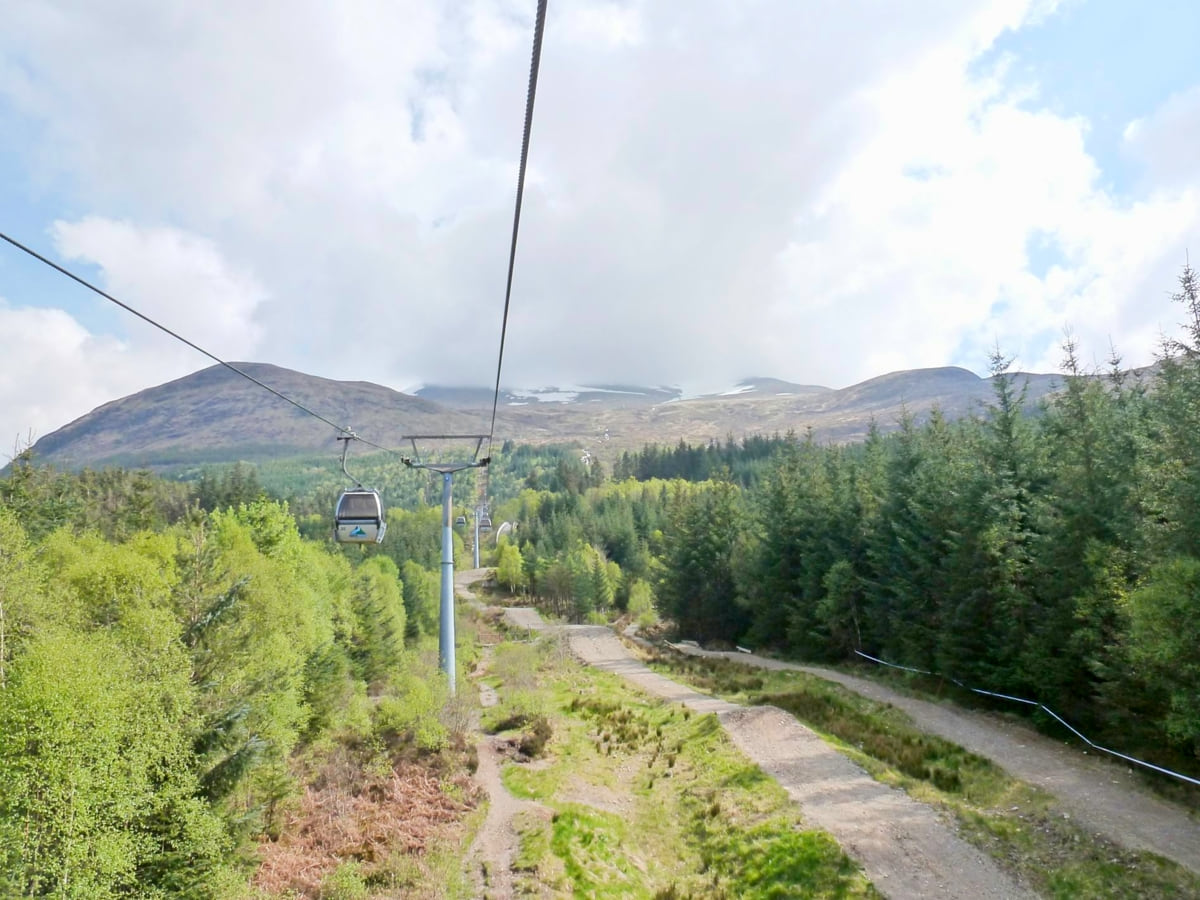
Ben Nevis is widely regarded as Scotland’s top winter sports venue alongside Cairn Gorm, but there’s much more to this mountain than skiing and snowboarding. Summertime sees almost as many visitors to Ben Nevis as winter does, thanks in part to the gondola ride that offers an easy way to get to the top for hikers, and walking trails that extend across the Nevis range in all directions.
The gondola is a tourist attraction in its own right and you’ll get some amazing views of the Great Glen along the 1.5-mile journey between the bottom and top stations, so don’t forget to pack your camera before you climb aboard.
While you’re free to take a walk on the Sgurr Finnisg-aig and Meall Beag trails once at the top, if you’re a keen mountain biker you’ll no doubt be itching to hurtle back down the mountainside on what is often called one of the best downhill biking runs in the UK.
If two wheels aren’t your cup of tea then I suggest you head to the Nevis Range Experience Centre where you’ll be able to take part in high-rope and tree-climbing experiences, paragliding, organized hikes, and guided photography walks.
The Best Scottish Highland Tours
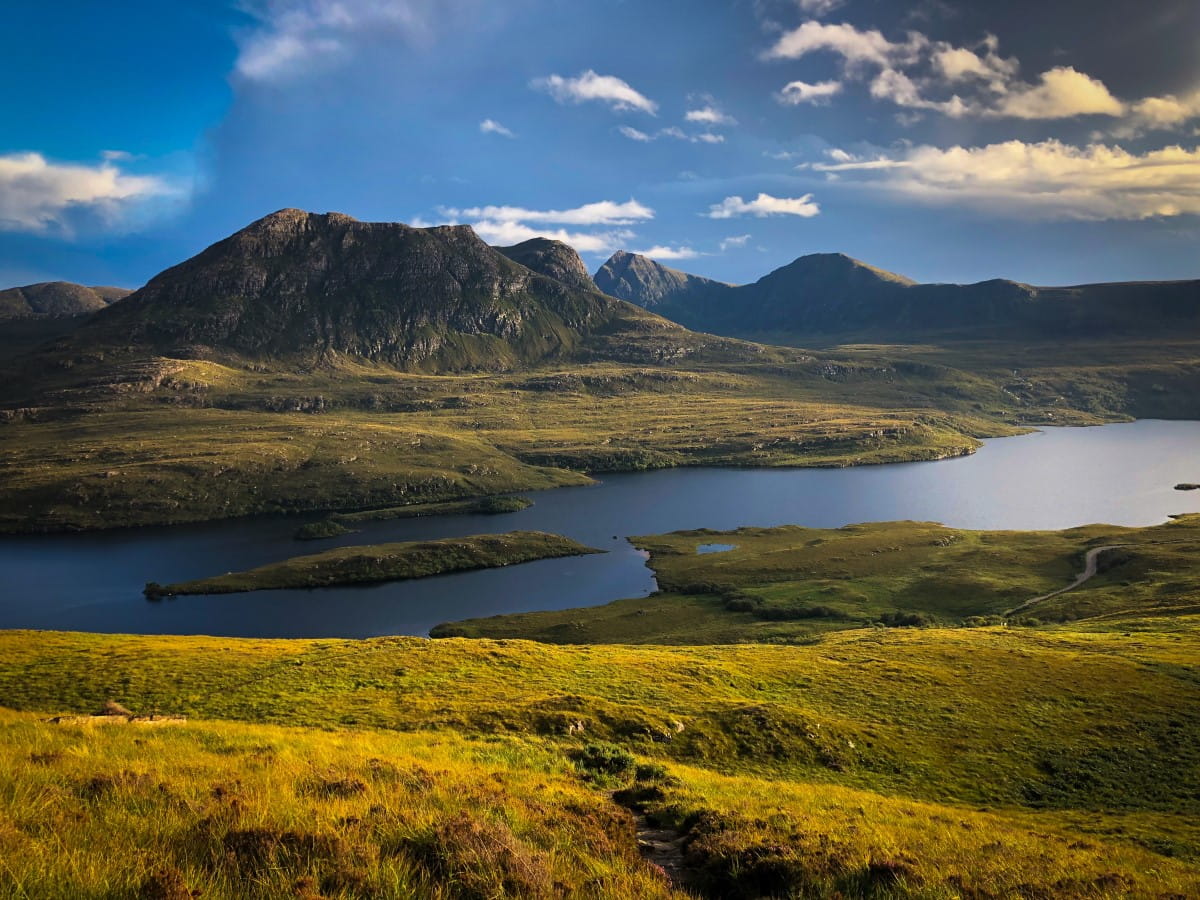
As nice as it is to explore Scotland on your own, there’s something to be said for joining a guided tour. While long-time visitors to the country will no doubt have a good idea of the best places to go, first-time visitors will likely find the number of attractions in the Highlands bewildering.
If that sounds like you, it might be time to look into guided tours for your next visit to Scotland. The days of sitting in a cramped 50-seat coach for hours on end are long gone, and most tours are now much more personal with groups that rarely exceed a dozen people.
The leader of the pack when it comes to small-group tours has to be Scottish tour operator Rabbie’s, which specializes in ferrying people around Scotland in clean, modern mini-buses with friendly and knowledgeable local guides.
The majority of Rabbie’s Scotland tour packages last a single day, meaning they’re perfect for day trips from Edinburgh and Glasgow, but they also run multi-day excursions that last up to two weeks. That means you can spend your entire holiday being driven around by expert guides who’ll show you the best places to visit while sharing tales that immerse you in Scotland’s culture.
The following list will give you an insight into what you can expect to see over 1 or 2 days on a Rabbie’s Scottish Highlands tour which will take you across breathtaking mountain scenery, battle-ravaged castles, and spectacular lochs and glens.
Highland Lochs, Glens & Whisky – 1 Day Tour
Itinerary:
- Depart Inverness and head to Strathpeffer village to explore the area.
- Drive to Beauly and explore Beauly Priory. Stop for lunch.
- Travel to Glen Affric and stop for a woodland walk.
- Travel to Loch Ness then return to Inverness.
Torridon, Applecross & Eilean Donan Castle 1-Day Tour
Itinerary:
- Depart Inverness and head into the Northern Highlands.
- Stop for photos at Loch Maree.
- Drive to the Beinn Eighe Nature Reserve Visitor Centre and take photos of the area.
- Drive to the Torridon mountains before stopping at the town of Sheildaig for refreshments.
- Continue to Applecross and stop for food in a local pub.
- Drive along the Bealach na Bà road.
- Head to Loch Duich and visit Eilean Donan Castle.
- Drive through the Kintail mountain range, loch Ness and the Great Glen.
- Arrive back in Inverness.
West Highland Lochs & Castles 1-Day Tour

Itinerary:
- Depart Edinburgh and head in the direction of Stirling to arrive at Doune Castle.
- Visit the castle then continue through Callander to Loch Lubnaig.
- Stop at Loch Lubnaig, then drive to the Braes of Balquhidder.
- Continue to Kilchurn Castle and visit the loch and castle ruins before stopping for lunch.
- Head to Loch Awe and stop at the town of Inveraray near Loch Fyne.
- Explore the old jail in Inveraray and Inveraray Castle before continuing through the Arrochar Alps. Stop along the way for photos.
- Drive along Loch Long towards Loch Lomond. Stop at the village of Luss.
- Continue towards Stirling Castle for photos.
- Arrive back in Edinburgh.
The Complete Loch Ness Experience 1-Day Tour
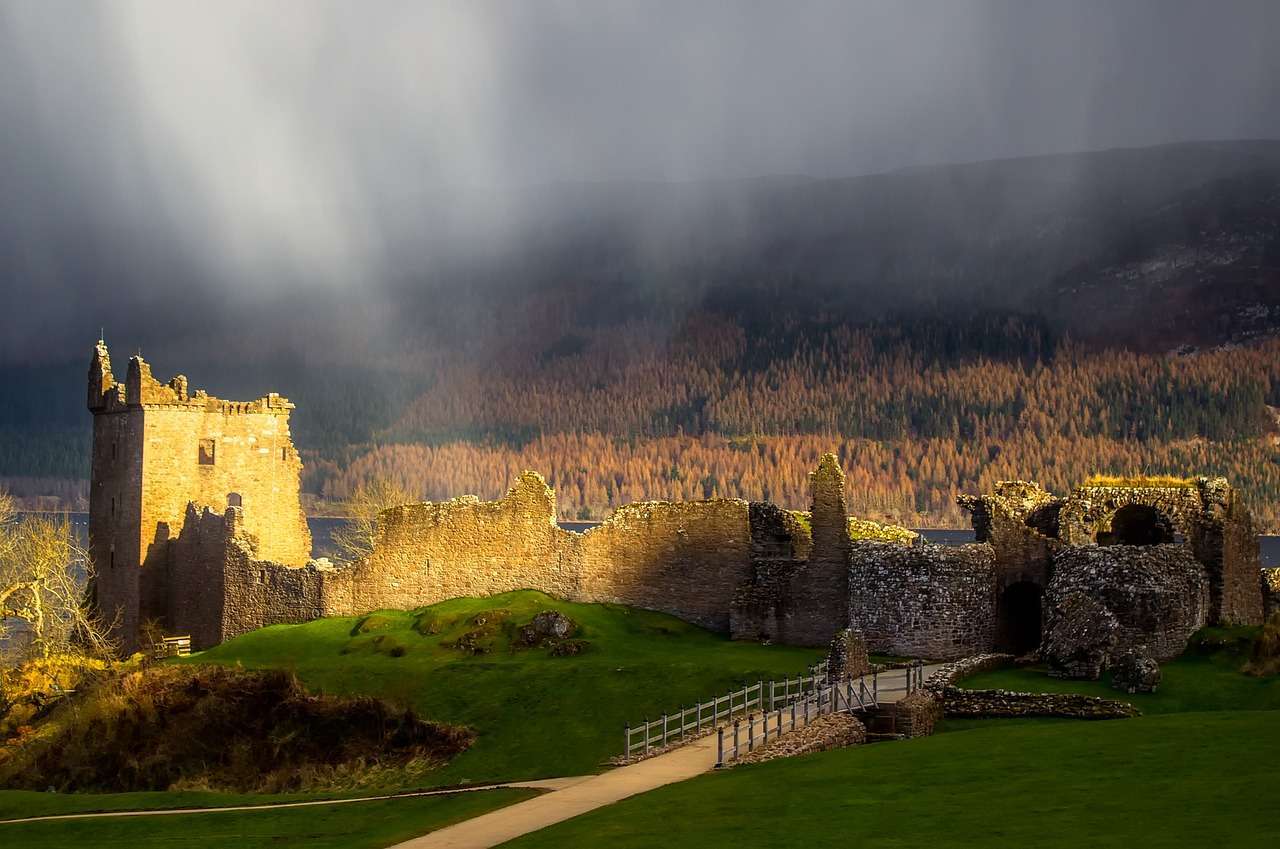
Itinerary:
- Depart Inverness and follow the Caledonian Canal to Loch Ness.
- Either go on a 1-hour cruise around the loch or a 30-minute cruise to Urquhart Castle.
- Visit the village of Drumnadrochit near Loch Ness for lunch.
- Visit the village of Invermoriston before heading to Fort Augustus for photos.
- Travel along the side of the loch to visit the Falls of Foyers waterfall.
- Head to the eastern end of the loch at Dores.
- Return to Inverness.
Loch Ness, Inverness and the Highlands 2-Day Tour
Itinerary day 1:
- Depart Edinburgh and head north towards the Highlands.
- Stop at a town in the Highlands for a break, then continue into the Cairngorms National Park.
- Choose an activity from whisky distilleries, forest walks, or exploring historic sites.
- Stop for food then continue to the overnight accommodation in Inverness.
Itinerary day 2:
- Travel to Loch Ness to either take a cruise on the loch or explore Urquhart Castle.
- Travel through the Great Glen past Ben Nevis and Fort William.
- Stop for lunch and continue to Glencoe.
- Drive through Rannoch Moor and continue onwards to Stirling.
- Arrive back in Edinburgh.
For 3-day Scottish Highlands tours, take a look at the Rabbie’s website:
Highlands tour from Edinburgh.
Highlands tour from Glasgow.
Highlands tour from London.
Resources
- If a visit to the Highlands is combined with a love of the TV series Outlander you might find this article handy: Where Are The Best Outlander Tours in Scotland?
- If you’d rather avoid the places where everyone else goes read my article about The Best Non-Touristy Places to Go in Scotland.
- Fallen in love with the Highlands? Then you’ll enjoy my Guide to the Most Romantic Places in Scotland.
Frequently Asked Questions
Where are the Scottish Highlands?
Traditional thinking holds that the Highlands and Lowlands make up half of Scotland, with the Highland Fault serving as the division line between the two. This fault line starts close to the area of Helensburgh, approximately 40 miles north of Glasgow, and extends all the way to Stonehaven in the northeast.
What are the most popular attractions in the Scottish Highlands?
Glencoe and Bidean Nam Bian. Ben Nevis in the Nevis Range. Loch Ness and Urquhart Castle. The Cairngorms National Park. Loch Lomond and the Trossachs National Park. Eilean Donan Castle. The Glenfinnan Monument. Duncansby Head.
How do I tour the Highlands by train?
The West Highland Line runs from Glasgow to Oban where you can catch a Calmac ferry to the Western Isles or stop at Fort William.
You can then step on board the Jacobite steam train which runs to the northwest fishing town of Mallaig on a route that has been described as the most beautiful train journey in the world.
What towns and villages should I visit in the Highlands?
Applecross sits on a peninsula in Strathcarron and is notable for the Bealach na Ba pass, which is one of the highest roads in the UK, reaching 2,053 feet at its highest point.
Braemar is best known as the home of the annual Braemar Gathering and Highland Games, held in September.
Glencoe is a popular destination for hikers, and it’s a great starting point for treks into the surrounding Glencoe mountains.
Fort William is the starting point for the Jacobite steam train. The town is known as the outdoor capital of the UK.
Fort Augustus is located on the southernmost tip of Loch Ness and is the main hub for exploring the loch after Inverness, which sits at the opposite end to the north.

